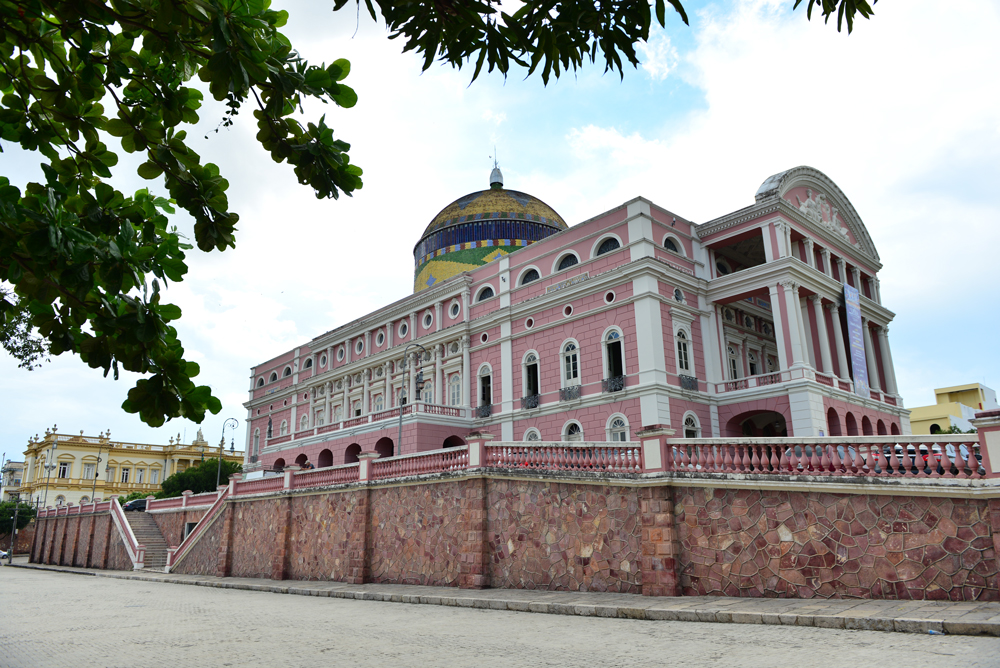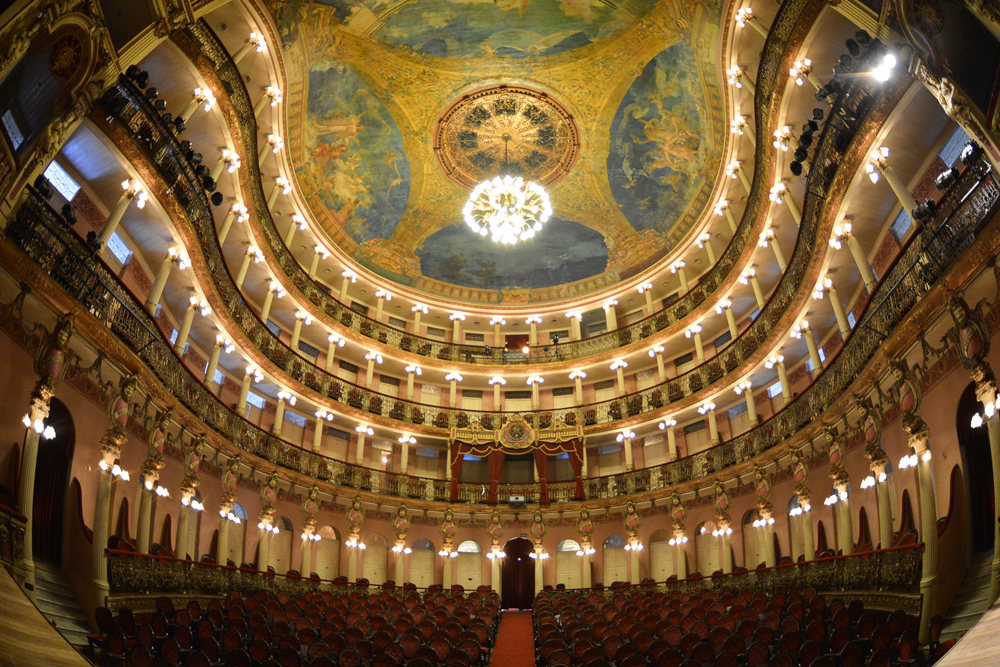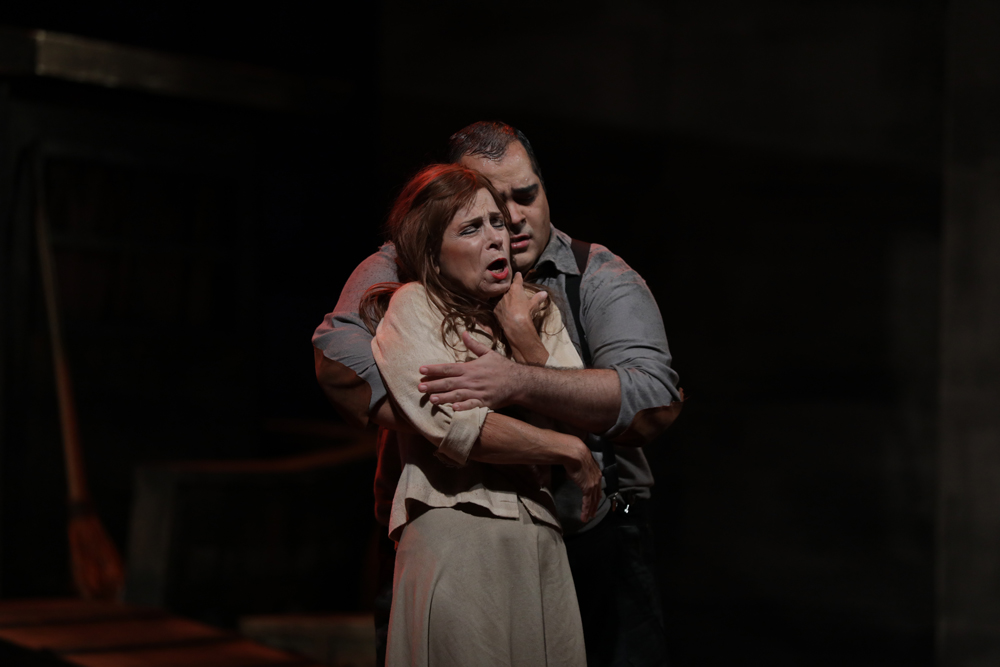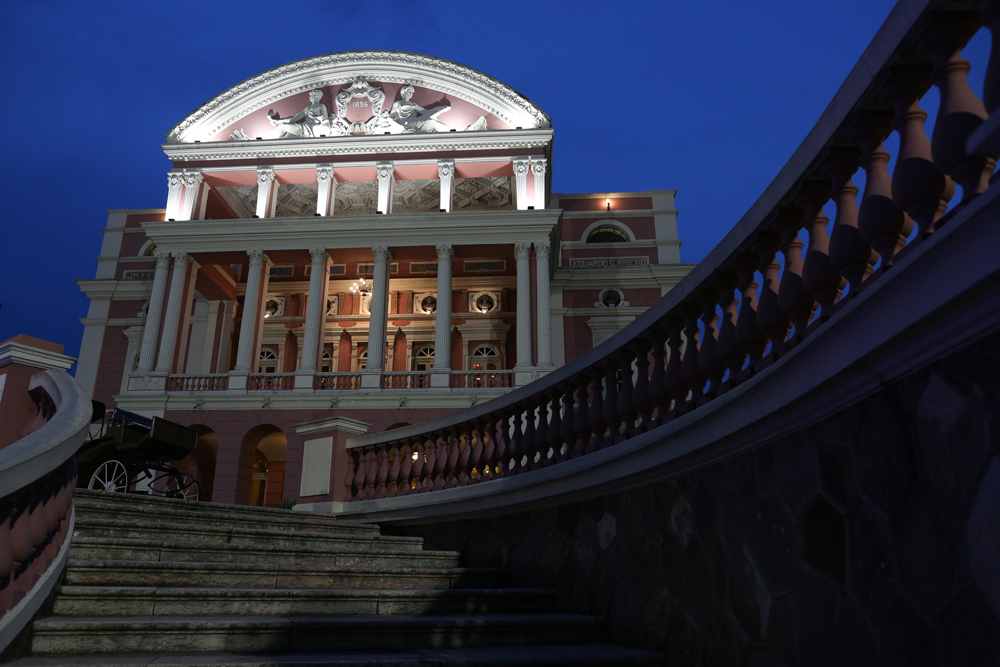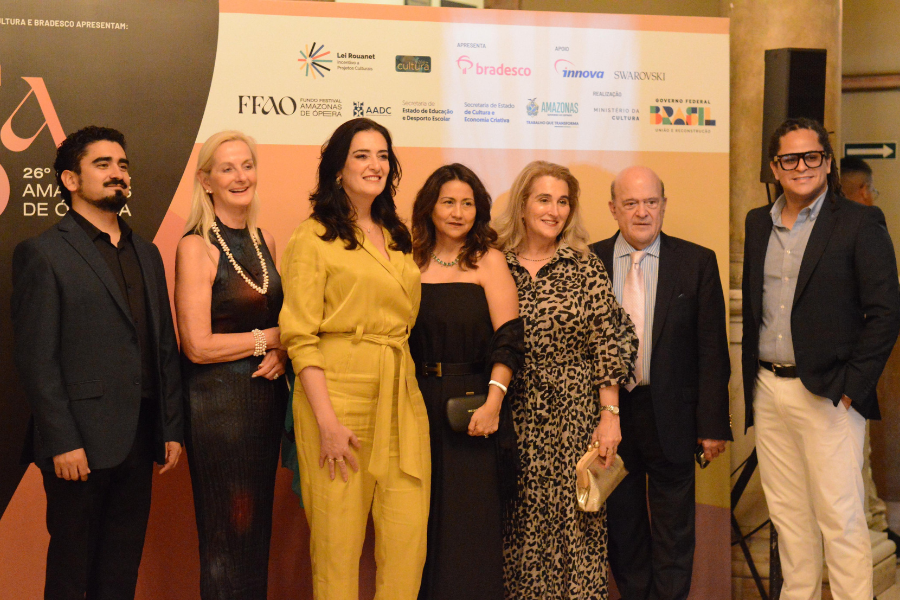Teatro Amazonas, hogar del Festival Amazonas de Ópera
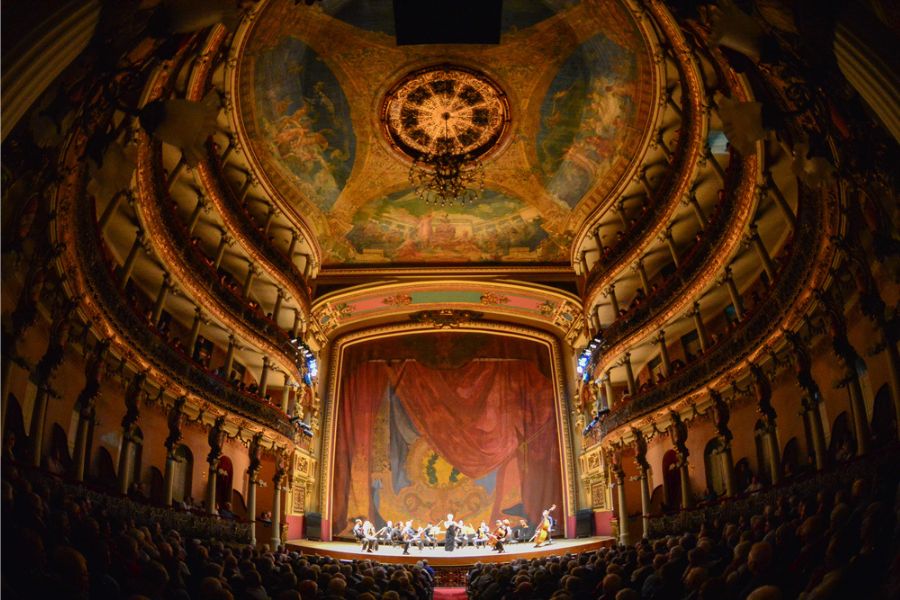
Fundado en 1997, el Festival Amazonas de Ópera es una prestigiosa instancia que ha apostado, desde sus inicios, por programar óperas del repertorio tradicional y títulos contemporáneos. El Teatro Amazonas de Manaos es, desde su última restauración, el escenario que acoge el festival. En esta nueva edición de Teatro del Mes, contamos su historia.
Al inicio de la película Fitzcarraldo (1982), del director alemán Werner Herzog, el Teatro Amazonas de Manaos hace una aparición estelar; el personaje de Brian Sweeney Fitzgerald —conocido como Fitzcarraldo—, un excéntrico aventurero y comerciante irlandés obsesionado con la ópera, se aproxima al teatro, ansioso por oír cantar al tenor Enrico Caruso, la estrella en la ópera Ernani, de Verdi.
«Venimos de Iquitos, 1.200 millas río abajo, tuve que remar porque el motor de mi bote se descompuso […] Por dos días y dos noches he remado para ver a Caruso al menos una vez en mi vida» dice Fitzcarraldo, interpretado en la cinta por Klaus Kinski. Frente a él se erige la fachada del Teatro Amazonas, caracterizada por un frontón redondeado, con relieves que adornan la superficie y filas de columnas de tres pisos que sostienen toda la estructura.
El encuentro de Fitzcarraldo con el Teatro Amazonas ilustra el empeño con que los públicos acudían —y todavía lo hacen— a este teatro de ópera. La escena también muestra cómo este edificio se convirtió en uno de los principales remanentes históricos —y actual atractivo turístico y cultural— de Manaos, una ciudad ubicada en medio de la Amazonía, que floreció gracias a la industria del caucho durante el siglo XIX y se convirtió en la «París de la selva», un emblema de la belle époque brasileña.
Manaos, la «París de la selva»
El Teatro Amazonas se emplaza frente a la Plaza San Sebastián, al costado de la parroquia en honor a este santo, en pleno centro de Manaos. Cuenta con una capacidad de 701 asientos, alberga entre sus cuerpos estables a la Orquesta Filarmónica de Amazonas y, anualmente, es sede del Festival Amazonas de Ópera, la principal instancia lírica del estado regional que convierte a Manaos en el epicentro de la ópera en Brasil.
La historia del Teatro Amazonas va de la mano con la historia de Manaos. En el siglo XVII, los colonos portugueses fundaron el fuerte San José de Río Negro. Este destacamento rural era un punto estratégico para el imperio de Portugal, ya que estaba emplazado en las confluencias del río Negro y el Amazonas.
Luego de la independencia de Brasil en 1822, la capitanía de San José de Río Negro consiguió el estatus de villa y, en 1848, fue bautizada con el nombre de Manaos, un homenaje a la tribu de los manaós, habitantes originales de la zona. Entre 1890 y 1910, la ciudad fue el centro de la fiebre del caucho, un proceso social, económico y cultural que atrajo oleadas de migración brasileña, francesa, italiana e inglesa, entre otras, y provocó un explosivo aumento de la riqueza.
Manaos se convirtió en un polo de imponentes y lujosos edificios, parques, plazas, jardines con fuentes y estatuas, calzadas de granito y piedra lioz importada desde Portugal. Eduardo Ribeiro, el carismático gobernador regional de ese entonces, se encargó de que todas las reformas y planificaciones urbanas cumplieran con los estándares de modernidad que la riqueza acumulada por el boom del caucho podía permitir.
Un aura de belle époque se cernía sobre la opulencia que la bullente sociedad burguesa amazónica exigía para sí misma. Se hacía necesario un edificio para el goce de la cultura y la ópera. Para sellar su legado, Ribeiro se comprometió a completar la construcción del Teatro Amazonas, iniciada en 1884 bajo la dirección del arquitecto italiano Celestial Sacardim.
“Comencé con un pueblo y lo convertí en una ciudad moderna”, fueron las palabras de Ribeiro para establecerse a sí mismo como un ícono de los anhelos modernizadores que hacia el cambio de siglo caracterizó a diferentes naciones latinoamericanas. Sin embargo, su periodo como gobernador finalizó antes de la fastuosa apertura del teatro.
Un testigo de la era dorada de Manaos
Luego de casi 20 años en construcción, el Teatro Amazonas finalmente le abrió sus puertas a la ópera. La noche del 7 de enero de 1897, una ansiosa multitud de personas acudió a la función de La Gioconda, de Amilcare Ponchielli.
El teatro en sí mismo también ofrecía un espectáculo. Para su construcción y ornamentación se importó mármol italiano de Carrara, que se usó en las columnas, escaleras y estatuas; acero proveniente de las fundiciones de Glasgow para sostener las paredes; y desde Alsacia llegaron los materiales para techar el edificio.
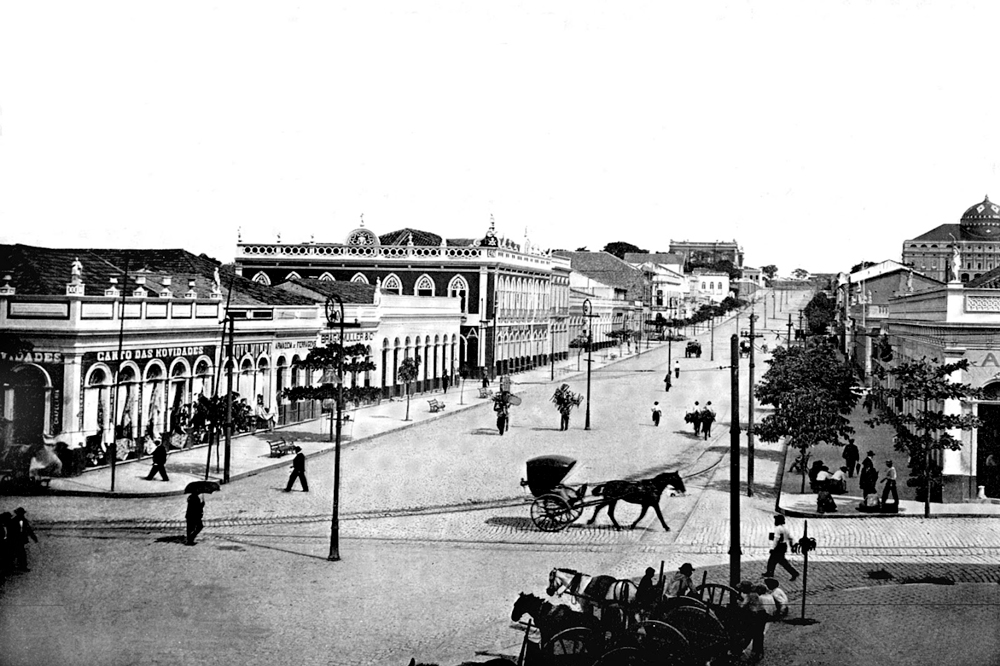
Vista de la Av. Eduardo Ribeiro de Manaos en 1901. A la derecha alcanza a apreciarse el Teatro Amazonas, con su imponente cúpula.
Al interior, destacan los muebles traídos de París en el estilo de «Luis XV», las pinturas al fresco de Domenico de Angelis que recorren los muros y el telón de boca de Crispim do Amaral, titulado La reunión de las aguas, sobresale por su representación de la unión de los cauces de los ríos Negro y Solimões. En las columnas que rodean al público se ubican las máscaras que honran a diferentes compositores y dramaturgos de la historia como Aristófanes, Molière, Mozart, Rossini y Verdi.
Además, el teatro se encontraba dentro de los estándares más modernos para su época. “Cada una de las seiscientas butacas disponía de su propio sistema de ventilación para superar la humedad y el calor, algo que no fue suficiente para convencer a Enrico Caruso de que viajara hasta allí para inaugurarlo”, señala el periodista Jorge Álvarez en un artículo para la revista cultural La brújula verde sobre la historia del teatro.
En sus primeros años, el Teatro Amazonas atrajo a diferentes compañías de ópera italianas y francesas, otorgándole a Manaos un importante estatus de referente cultural en Brasil y Latinoamérica. No obstante, el esplendor de la ciudad no duraría demasiado; hacia mediados del siglo XX, la industria de la explotación del caucho se trasladó a Asia debido a que ofrecía costos más baratos y mayor eficiencia en la extracción.
Manaos entró en un periodo de repliegue económico; las inversiones cayeron, mucha de su población se trasladó a otros lugares en busca de trabajo, las importaciones de lujo se frenaron de golpe y la decadencia urbana obligó a que muchos de los opulentos edificios quedaran abandonados. El Teatro Amazonas no fue la excepción, ya que por más que sus brillantes periodos lo elevaron como un magnífico teatro de ópera, también su abandono durante años lo dejó a la deriva como un testigo de la edad dorada de Manaos.
El Festival Amazonas de Ópera
Luego de ser restaurado en tres ocasiones —en 1929, 1974 y entre 1989 y 1990— el Teatro Amazonas volvió a ser el hogar de presentaciones artísticas a principios de la década del 2000 bajo la gobernación de Amazonino Mendes. Actualmente, el teatro acoge a varios cuerpos estables: la Orquesta Filarmónica Amazónica, Coral Amazónico, el Cuerpo de Baile Amazónico, la Orquesta de Cámara Amazónica, la Orquesta de Guitarras Amazónicas, Banda Amazonas y el Ballet Folklórico Amazónico.
El Festival Amazonas de Ópera (FAO), por su parte, encontró en el Teatro Amazonas un nuevo hogar para recibir producciones de ópera tanto nacionales como internacionales. Fundado en 1997, el festival fue el primero de su tipo en América Latina y un referente muy importante de Iberoamérica.
Además de presentar óperas tradicionales como Madame Butterfly, Diálogos de las Carmelitas, La Traviata o Carmen y de llevar a cabo la hazaña —única en Brasil— de presentar el ciclo completo del Anillo del Nibelungo de Wagner, el evento ha apostado por una importante renovación del repertorio: ha programado títulos como Lulú de Alban Berg; Magdalena de Heitor Villa-Lobos; Ça-Ira del ex líder de Pink Floyd, Roger Waters; o, recientemente, O corvo y Moto-contínuo, que establecen un diálogo entre las artes mediales y la lírica.
Dirigido por Flávia Furtado, el Festival Amazonas de Ópera ha acogido a más de 4 mil artistas y técnicos y ha recibido a más de 370 mil personas que han asistido a las diferentes ediciones, realizadas entre abril y mayo de cada año. En su edición nº24, realizada en abril y mayo de 2022, el director titular de Coral Amazónico, Otávio Simões, comentó que “el público puede esperar diversidad como siempre, temas diversos y de gran alcance. El FAO siempre presentará diferentes temas para diferentes tipos de grupos, para todas las edades, y todos pueden venir a ver el Festival de Ópera de Amazonas».
El Teatro Amazonas nació y se crió en un periodo de opulencia y bonanza. Fue abandonado en momentos de crisis y desconsuelo económico. El cine, de la mano de Werner Herzog, lo revalorizó y mostró a nuevos públicos en la década de 1980 y, finalmente, el espacio encontró su renacimiento. Hoy, el Teatro Amazonas no es solo un testigo o remanente de una edad dorada sino un edificio vivo que fusiona lo histórico con lo moderno y que, una vez al año, es escenario de un festival de ópera que atrae las miradas del mundo entero.


